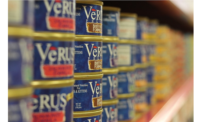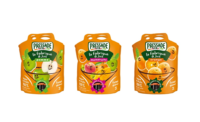Food and Beverages Bioplastics Packaging Expected to Reach $28.5 billion in 2020




The global bioplastics packaging market for food and beverages was valued at $3.191 billion in 2013 and is expected to grow at a CAGR of 36.8 percent from 2014 to 2020, to reach an estimated value of $28.5 billion in 2020, according to a study recently released by Persistence Market Research.
Over the past few decades, a surge in the use of plastics due to increase in consumer demand for safety and convenience in packaged food and beverages has been observed. When it comes to food and beverages packaging, terms such as ’green’, ’organic’, ‘fair trade’, and ’locally sourced’ have been drawing the attention of consumers in the recent years. With climatic changes taking place, health awareness, and environmental issues are growing. Furthermore, media coverage has made consumers more aware about the factors that are guiding their purchasing decisions.
Bioplastics packaging covers an array of industries, including organic foods, fruits and vegetables, beverages, bread and bakery products, and catering, which require disposable utensils (cups, mugs, trays, plates, and cutlery).
Bioplastics have been gaining attention of policymakers in the packaging domain in recent years as it is being sourced from renewable resources and carry implications for sustainable development. Governments in several countries are against the compost of non-biodegradable conventional plastics for land filling and have been formulating several laws and policies that limit their use.
The increasing demand for bioplastics packaging for food and beverages is the result of certain advantages that bioplastics have over conventional plastics such as glossy and attractive appearance, antistatic behavior, printability, barrier effect, and enhanced shelf life of fresh products. Ongoing technology advancements for improvement of physical properties of bioplastics is another major driver of the bioplastics packaging market for food and beverages industry
The introduction of nanotechnology-based bioplastics for food and beverages packaging has opened many new application in food and beverages packaging for bioplastics over the years. Nano-enabled packaging ensures food product safety, environmental safety, and improved performance characteristics such as barrier properties particularly in PLA and starch based bioplastics which makes them suitable for many moisture content foods packaging application.
Complex separation of bioplastics from the disposal site based on their resin type makes the recycling process tough, which is one of the restraints for the growth of this market. The market of bioplastics packaging in food and beverages industry is consolidated with fewer companies accounting for larger portion of the market. Some favorable legislative reforms and new product development holds large opportunities for the bioplastics packaging market.
For more information, visit www.persistencemarketresearch.com.
Looking for a reprint of this article?
From high-res PDFs to custom plaques, order your copy today!










